Contents
 Hygrophorus is a fungus from the lamellar genus, mostly dull, whitish in color. Basically, the hygrophorus mushroom grows in meadows or forests, forming mycorrhiza with various herbs and trees.
Hygrophorus is a fungus from the lamellar genus, mostly dull, whitish in color. Basically, the hygrophorus mushroom grows in meadows or forests, forming mycorrhiza with various herbs and trees.
Some types of hygrophora are edible; poisonous varieties have not been identified.
On this page you can read the description and see photos of the hygrfor mushroom of the most common varieties: white (sweet), late (brown), golden, reddish, pinkish, fragrant, larch and early. The description of hygrophores of different species is similar, but there are a number of differences.
Hygrophorus white (olive white, sweet)
Category: edible.
White hygrophor cap (diameter 4-11 cm): grayish-olive or grayish-brown, smooth, with fibrous edges. In young mushrooms, hemispherical or bell-shaped, which becomes more prostrate with time. It is covered with a mucous coverlet or weak pubescence, as well as barely noticeable tubercles.
Leg (height 4-12 cm): white, with scaly bands. Solid and fibrous, cylindrical, often curved.
The plates of olive-white hygrophore are light and very rare.
Pulp: white, delicate, very fragile.
Doubles: are absent.
When growing: from mid-August to early October in Europe and North America.
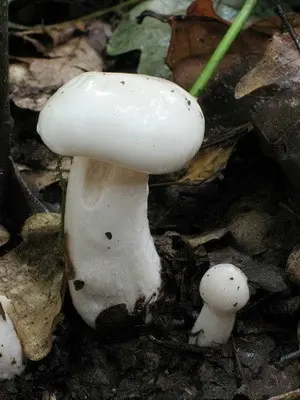
[ »»]
Where can I find: only in coniferous – spruce and pine – forests, in wet places and lowlands.
Eating: usually in the form of pickles. White hygrophorus is very tasty, slightly sweetish, for which it received the name sweet mushroom. It is recommended to use only young specimens in cooking.
Application in traditional medicine: does not apply.
Other names: hygrophore olive-white, sweet.
Mushroom hygrophorus late (brown)
Category: edible.

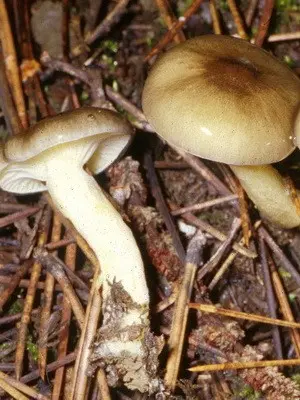
Late hygrophorus cap (Hygrophorus hypothejus) (diameter 3-7 cm): olive-brown or brown-brown, slightly convex, with edges turned inward. The surface is mucous, the edges are lighter than the center. Because of the color of the cap, this mushroom is often called brown hygrophore.
Leg (height 4-12 cm): yellowish or olive, continuous, smooth, cylindrical. Old mushrooms may be hollow. Young hygrophores have a ring that disappears over time.
Records: yellow or light orange, sparse and thick, weakly adhering to the stem. Sometimes with the remnants of the bedspread.

Pulp: odorless, fragile. Almost white in the cap, yellowish in the stem.
Doubles: are absent.
When growing: from mid-September to almost the end of November. It appears even when the first snow falls, which is why it was called “late”.
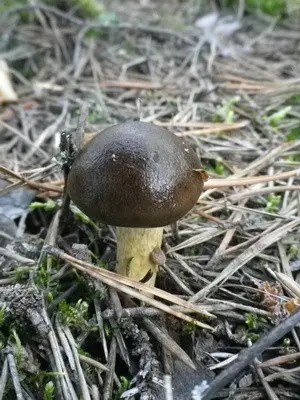
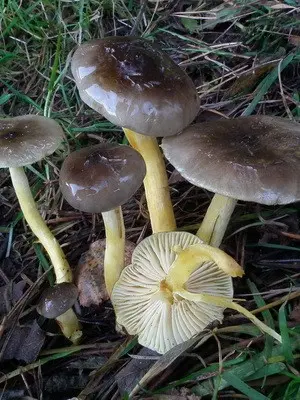
Where can I find: next to pines in coniferous or mixed
Eating: young late hygrophores have a very pleasant taste and are used to make soups or second courses. This mushroom is especially popular in the cuisine of the Balkan countries.
Application in traditional medicine: does not apply.
Other names: hygrophorus brown, wood lice.
fragrant hygrophorus mushroom
Category: edible.
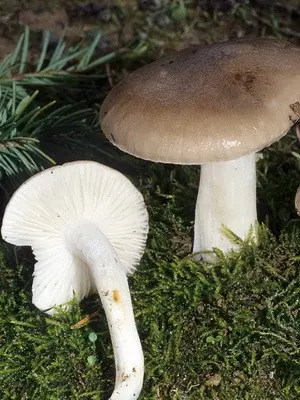
Fragrant hygrophorus hat (Hygrophorus agathosmus) (diameter 4-10 cm): gray or brownish, the edges are usually lighter than the center, smooth or slightly sticky. In a young mushroom, it is slightly convex, with time it becomes almost completely flat.
Leg (height 4-12 cm): gray, but lighter than the cap, solid, cylindrical. Occasionally flattened, with scales along the entire length.
Records: white or grayish, sparse and thin, sometimes branched. Weakly grow to the leg.
[ »wp-content/plugins/include-me/goog-left.php»]
Pulp: white or gray, occasionally with an olive tint. Loose, soft and watery. The name “aromatic” this mushroom received due to the strong almond smell. In humid weather, it can be heard, even being a meter away from the hygrophore.
Doubles: are absent.
When growing: from the end of August to the beginning of October. Especially common in the Far East.
Where can I find: on calcareous soils of pine-spruce forests, sometimes near firs.
Eating: very tasty in salted and pickled form.
Application in traditional medicine: does not apply.
Other names: fragrant hygrophor, fragrant hygrophor, good hygrophor.
Hygrofor golden
Category: conditionally edible.
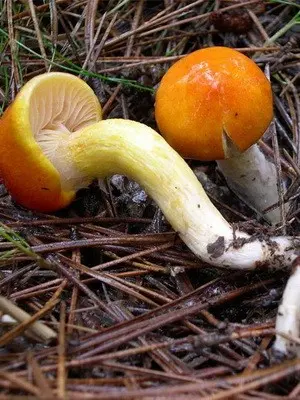
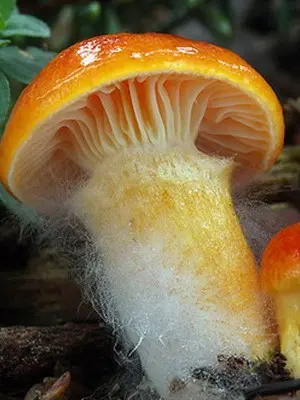
Its name hygrophorus golden (Hygrophorus chrysodon) received due to small yellow blotches over the entire surface.
Hat (diameter 4-8 cm): in a young fungus, it is slightly convex, with time it becomes almost prostrate.
Leg (height 4-7 cm): very dense, but may be slightly curved. Often with yellowish scales along the entire length.
Records: sparse and thick, cream-colored.
Pulp: white, with an extremely unpleasant specific odor.
Doubles: are absent.
When growing: from early August to mid-October in the northern countries of the Eurasian continent and North America.
Where can I find: only in broad-leaved forests, most often near oaks and lindens.
Eating: fresh as an ingredient in soups.
Doesn’t have good taste.
Application in traditional medicine: does not apply.
Hygrophorus reddish mushroom
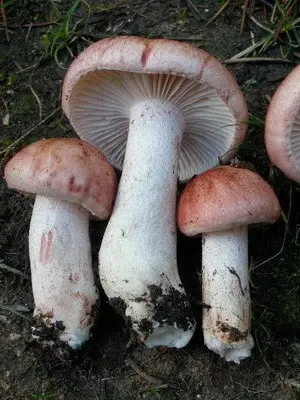
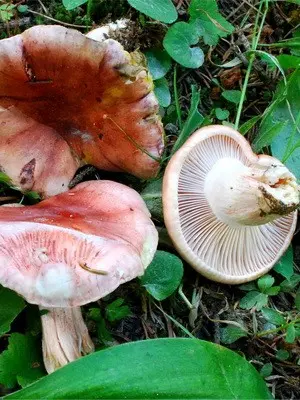
Category: conditionally edible.
Reddish hygrophorus cap (Hygrophorus erubescens) (diameter 4-11 cm): in young mushrooms it is white-pink, in the rest it is saturated purple. It has a conical or slightly convex shape. The edges are bent towards the inside and slightly pubescent. Slightly sticky to the touch.
Leg (height 4-10 cm): white, with pink patches, thick and even, cylindrical in shape.
Records: pinkish white, thick, sparse.
Doubles: russula hygrophorus (Hygrophorus russula), which has a larger hat and grows only in deciduous forests.
When growing: from mid-July to the end of September in the northern regions of Our Country.
Where can I find: only in coniferous forests, often near spruces.
Eating: since the fresh mushroom is very bitter in taste and belongs to the conditionally edible group, it is used only in salted and pickled form.
Application in traditional medicine: does not apply.
Other names: reddening hygrophorus.
Hygrophorus larch
Category: edible.
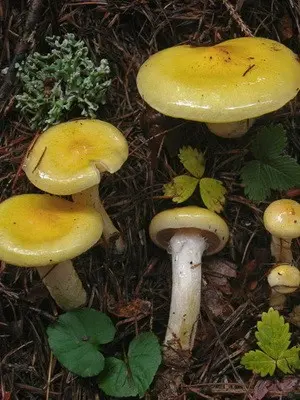
Hat of larch gyrofor (Hygrophorus lucorum) (diameter 3-7 cm): yellow or bright lemon color, mucous, with open edges.
Leg (height 3-8 cm): cylindrical shape with a slight thickening at the very base. Sometimes with mucous threads connecting the stem to the cap.
Records: slightly lighter than the surface of the cap.
Pulp: white or light yellow.
Doubles: are absent.
When growing: from the beginning of August to the end of September in the southern regions of European countries.
Where can I find: most often under deciduous trees.
Eating: a completely edible mushroom that can be consumed in almost any form.
Application in traditional medicine: does not apply.
Other names: hygrophorus yellow.
[ »wp-content/plugins/include-me/ya1-h2.php»]
Hygrophorus spotted mushroom
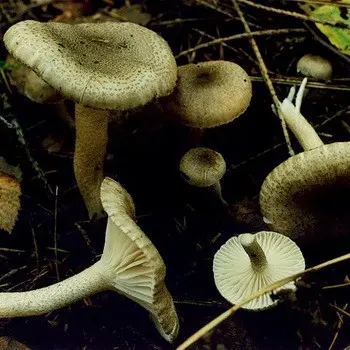 Category: edible.
Category: edible.
Spotted Hygrophorus cap (Hygrophorus pustulatus) (diameter 4-7 cm): grey, grey-olive or grey-brown, glossy and sticky in wet weather. In young mushrooms, it is slightly convex, becoming prostrate with time. The edges are usually curved and lighter than the center, covered with small dark dots, from which the mushroom gets its name.
Leg (height 4-7 cm): solid, lighter than the hat. It has a cylindrical shape, but may be slightly curved. Sometimes there is a dark “belt”.
Pulp: very fragile and delicate. White color does not change at the place of the fracture. Does not have a pronounced odor.
Doubles: are absent.
When growing: from early September to mid-November in almost all countries of Northern Europe.
Where can I find: in spruce and mixed forests. Usually “buries” in moss and forest litter.
Eating: very tasty mushroom, with a gentle and sweet smell. Not suitable for salting and pickling. In Western Europe, it is popular as an ingredient in soups.
Application in traditional medicine: does not apply.
Other names: hygrophore bubbly.
Hygrophorus early
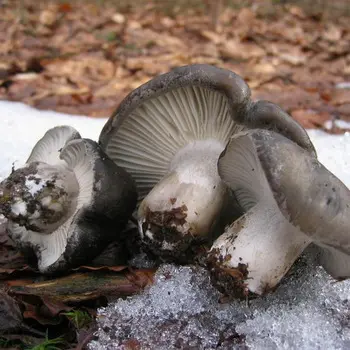 Category: edible.
Category: edible.
Early hygrophorus cap (Hyprophorus marzuolus) (diameter 5-11 cm): smooth, dry and elastic, at first gray-white and convex, with time becomes leaden or almost black and almost flat. Occasionally it may be depressed. The surface is wavy and curved. Sometimes the top is covered with a light fluff.
Leg (height 4-10 cm): cylindrical, short and slightly arched, white or gray. At the top under the hat with small scales.
Pulp: white or grayish. The smell of the cut hygrophore is very weak.
Doubles: absent, since this mushroom grows in early spring, when the rest of the edible and poisonous mushrooms have not yet appeared.
When growing: from early March to mid-May in the temperate zone of the Eurasian continent and North America. The remaining hygrophoric plants begin to appear mainly in August-September.
Where can I find: in coniferous and deciduous forests with nutrient soil.
Eating: usually in soups and meat dishes.
Application in traditional medicine: does not apply.
Other names: March hygrophorus, snow mushroom.
[ »]
pinkish hygrophorus mushroom
Category: edible.
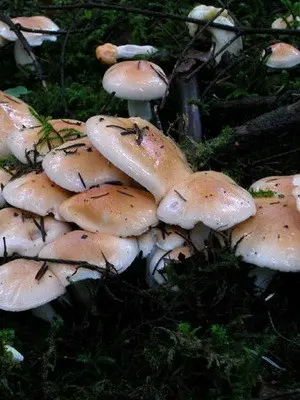
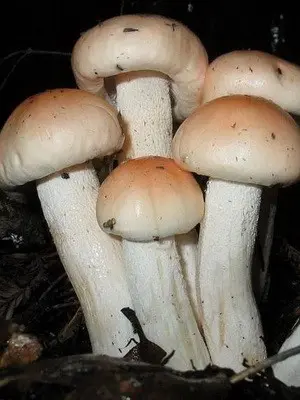
The cap of the pinkish hygrophorus (Hygrophorus pudorinus) (diameter 5-12 cm): usually pink-salmon, in adult mushrooms in the form of a hemisphere or prostrate. Fleshy, slightly mucous, with a slight tubercle and pubescence over the entire surface.
Leg (height 5-14 cm): cylindrical shape, slightly paler than the cap.
Records: frequent and thick.
Doubles: are absent.
When growing: from the end of August to the end of September in temperate countries of Europe and North America.
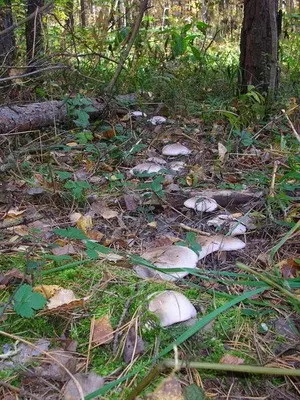
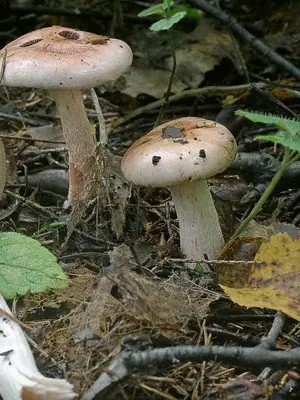
Where can I find: usually near fir or spruce, less often in mixed forests.
Eating: raw or pickled, subject to preliminary heat treatment.
Application in traditional medicine: does not apply.









